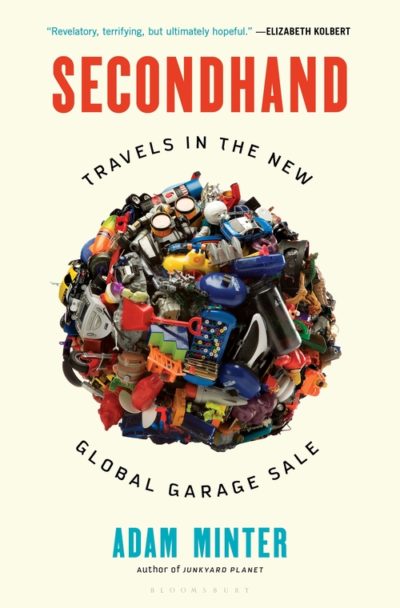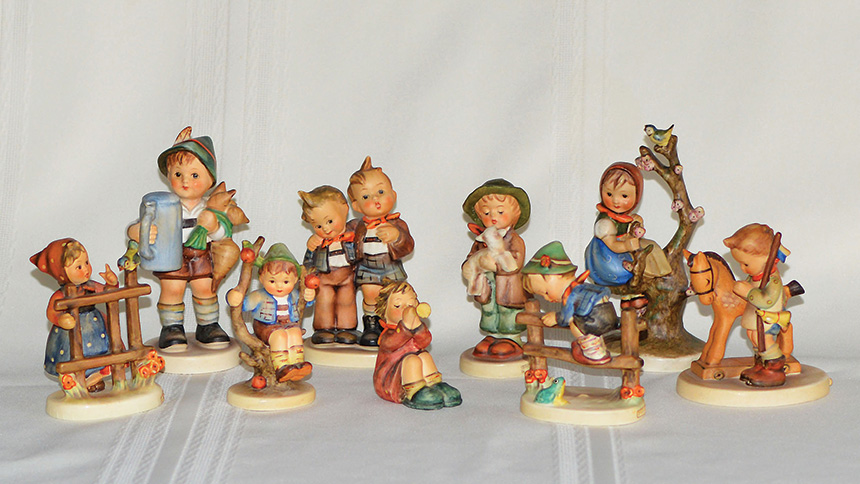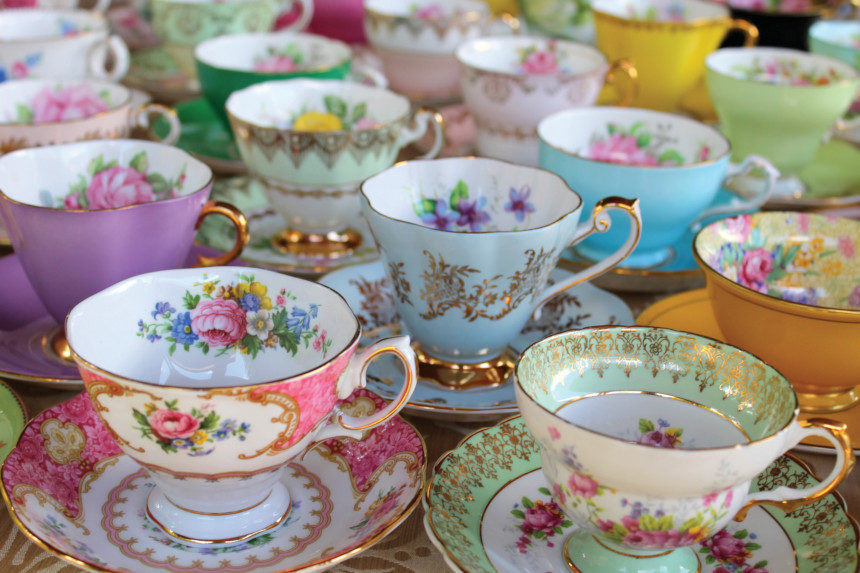After my mother passed away unexpectedly, like so many Americans with parents who accumulated stuff over a lifetime, my sister and I were left with an uneasy question: What do we do with her stuff? From a sentimental standpoint, it was hard to let go of anything for fear it meant something to her. From a practical perspective, neither of us had the space to keep much. My sister and her family live in a two-bedroom New York City co-op; at the time, my wife and I rented a one-bedroom Shanghai apartment.
Our problem wasn’t unique. Around the world, questions about what to do with the material leftovers of a life are becoming as much a part of the mourning process as the funeral. There’s so much, and the children all live somewhere else. Who’s to clean it out?
Multifamily homes emptied of stuff are assets. And they are becoming more common. People over age 65 will account for one quarter of the U.S. population by 2030, and senior housing demand is expected to grow with their population. That’s why Sharon Kadet is seated at a small coffee table in the corner of a windowless conference room at a Coldwell Banker real estate office in Minneapolis at 9:30 a.m. on a weekday.
She’s been invited to pitch Empty the Nest to the agency’s roughly 40 agents. Plenty of companies and individuals will clean out homes and drive the stuff to the dump after skimming the easily marketable objects. But Empty the Nest is unique in its commitment to finding reuse and resale markets before giving up on an object. Empty the Nest has a thrift store, and what can’t be sold there is donated to organizations that might have better luck.
As Sharon sets out Empty the Nest brochures, a handsome realtor in a very expensive-looking blue suit approaches. He’s heard of Empty the Nest and wants to know more. But it’s not for a client. “My dad is aging. He’s not a hoarder, and we’re talking about an estate sale. But the problem is that nothing sells at estate sales anymore.”
Sharon has heard this before. “With an estate sale, you don’t know what you’re going to make. And you’ll still have a project, stuff left behind when you’re done.” They exchange business cards, and as he walks away, Sharon whispers to me, “This is so common. You’re here to talk to realtors about a solution, but it quickly becomes about their family. It’s just how we live. We don’t just keep what we need. I’m the same way.”
As we’re talking, a short, late-middle-aged realtor in a bright red coat approaches us. She introduces herself as Lesley Novich and tells me she’s sold homes for 20 years. She also knows Sharon and uses Empty the Nest. “As a realtor, you can tell people to declutter. But to do it yourself …” She shakes her head.
Sharon tells Linda that I’m writing about Empty the Nest and the secondhand-goods industry. Linda puts her hand over her heart. “Love it! When I moved out for college, my mother held a secondhand party for me. All that old heavy wooden furniture, we wanted it.”
Sharon lets out a big laugh almost too loud for the room. “Now nobody wants it.”
Linda leans toward Sharon as if she’s getting ready to confide. “My nephew, moving into a new apartment, wants all new. He’s happy with Target.”
Sharon, the blunt marketer, takes it in and pushes it right back out. “Target is purposeful. Secondhand is the experience.”
My grandparents lived in a split-level home in St. Louis Park, Minnesota, roughly a half-mile from Highway 169. During my first five years, I lived around the corner on Quebec Avenue South, and I recall running between houses to reach their front door, where, without fail, I’d be greeted by my grandmother Betty. She’d usually bring me upstairs to the living room and kitchen. But if I had my choice, we’d slip down the creaking wooden steps to the basement.

It was filled with stuff, most of it “good stuff,” as my grandmother called it. There were two large, heavy wooden china cabinets in the far corners (one had belonged to her mother, I believe), a wooden drop-front desk on the near wall (“I’m saving that for you,” she’d say), antique lamp stands, a pharmacist cabinet (“that’s also yours one day”), and tables covered in knickknacks, including U.S. presidential campaign buttons (IF I WERE 21, I’D VOTE FOR KENNEDY), vases, candlestick holders, postcards, bits of art glass, and random photos. A photo of Abraham Lincoln hung on one wall, a reproduced Napoleon portrait on another, and a framed coin collection near the stairs, with a random assortment of other images — mostly landscapes — scattered throughout.
If you were lucky enough to be invited into the basement — and not everybody was — she’d likely dig into the assortment of objects with the same curiosity as you, the first-time visitor. And if you picked up something — say, an antique iron — and asked where she’d found it, the answer was almost always the same: “That was so long ago. Probably a sale.”
Some of my earliest childhood memories entail riding, before dawn, in the passenger seat of my grandmother’s long, powder-blue sedan. We stop in front of a single-story suburban house, shut off the headlights, and wait. The talk-radio station is playing softly, and the newspaper classified pages whisper as my grandmother peruses them for nearby garage sales. When the garage door opens, she closes the paper, and we walk up the driveway, tailed by other early arrivers hoping to get first crack at the sale. I remember plates covered in brooches filled with rubylike stones, and my grandmother negotiating as the others leaned in to see what they might be missing. We always left with some “good stuff.”
The reasons for attending a garage sale in the 1960s and ’70s varied. The American counterculture that emerged in the 1950s inspired a wave of anti-materialist environmentalism among young Americans, and some viewed the garage sale as a way to bypass the consumer economy altogether. Others saw vintage goods as a means of connecting with a simpler, less-materialistic past. And many others viewed the garage sale as a more interesting and diverse shopping experience than the uniform retailing found in America’s booming mid-century shopping malls and department stores.
As young rebels grew into affluent baby boomers, garage-saling and thrifting went upmarket. In 1997, the American public broadcaster PBS began airing Antiques Roadshow, a weekly broadcast based on a BBC show. In it, collectors bring their antiques for experts to appraise, in hope of finding out they possess a treasure. The show has been a wild success, and it’s inspired imitators in the form of second- and third-generation treasure-hunt series like American Pickers.
My grandmother enjoyed those television shows. When Antiques Roadshow visited Minneapolis, she was eager to attend and even brought along a vase for appraisal. But when offered the chance to appear on camera, she declined, saying she “didn’t need the attention.”
By the late 1990s, she was mostly out of the garage-saling game anyway. She decided that the “good stuff” we used to buy as dawn broke was no longer around or cheap. Too many antique dealers were chasing it, she said, and there was far less to be had. “It’s not like it used to be.”
Main Street in Stillwater, Minnesota, runs parallel to the St. Croix River and between a handsome collection of two- and three-story brick buildings erected between 1860 and the early 20th century. Many were built by the lumber businesses that once thrived in the area, supplying wood to communities around the Midwest, including Minneapolis, 35 miles away. Others housed a once-thriving manufacturing base that took advantage of the St. Croix’s nearby connection to the Mississippi.

Nothing lasts forever, especially economies dependent on limited natural resources. Sure enough, the trees ran out, and the manufacturing was priced out. In their place, antique shops moved into the elegant old brick buildings, taking advantage of (then) low rents and property prices, and a vast inventory of antiques that could be found in the small towns of Minnesota and western Wisconsin. This new business grew. By the early 1990s, Stillwater was home to around 30 antique shops, many of which sold items likely made in or around Stillwater during its heyday. For residents of the nearby Twin Cities, the town’s antique stores became a favorite daytrip.
On the south end of Main Street, not far from where the tourist traffic enters town, is a husky three-story building that originally housed a furniture store and, later, a funeral home. In 1991, an antique business located across the street acquired the structure and transformed it into the Midtown Antique Mall, allegedly the largest antique emporium for hundreds of miles in all directions.
I remember plates covered in brooches filled with rubylike stones, and my grandmother negotiating as the others leaned in to see what they might be missing.
The brick exterior is unremarkable for Stillwater, but walk through the glass doors and you’ll find a towering two-story room with a balcony hung with dated landscape paintings, old advertisements, a set of Japanese silk prints, and several clocks. Below is a tangle of cabinets and tables displaying the full range of things that somebody found valuable enough to extract from the jumble of worthless items filling up a home, a business, a church. There is china; there is art glass; there are advertising signs; there is jewelry.
Most days, Dick Richter, a wispy antique dealer in his 70s, presides. He has an expressive face framed by a wild head of white hair and an equally scraggly beard. “We have one and a half million items in here,” he tells me as he leads me past the cash register and into the mall, where he’s sold since the early 1990s. “And I challenge anyone to say otherwise.” Dick isn’t the owner — that’s Julie, who’s presiding over the cash register. But his possessiveness is palpable. It reminds me of the affection you find in priests when they show visitors around their parish churches.
It’s not easy to manage an antique mall. Politics between dealers, especially those with similar collecting interests, can be fierce. “I’ll tell you about it — off-record,” Dick says, shaking his head as he leads me quickly past a wash of children’s books, vintage dresses, racks of old Life magazines, china, and glass. He turns into a booth lined on both sides by Star Wars action figures, Austin Powers action figures, and Star Trek action figures. “Twenty years ago, we wouldn’t have allowed this,” he says. “Now? People want what reminds them of what they grew up with. It’s out of production, so we allow it. Not my thing, but gotta move with the times.” He moves along, past cabinets of antique glass and jewelry, racks of vintage clothing, and stops at a cabinet full of antique cups and saucers.
“So what’s your thing?” I ask.
“These days, stained glass. But my wife and I, we used to do a lot of furniture and dolls.”
I gaze at the cups and saucers. “My grandmother collected cups,” I say to him, lingering on the memory of the display rack she arranged just outside her kitchen.
“Nobody wants them anymore. Sorry. Twenty years ago, we could get 20 to 40 bucks for a cup. Now?” He points at a small sign: 50% OFF.
For decades, the collectibles market made sense. Demand for unique, precious things outpaced the supply, and so the price went up. What’s changed is that notions of what’s unique and precious have gone down-market. The ancient Greek statuary sought out by nostalgic and admiring ancient Roman aristocrats was definitely rare. Thus, the price was and is high. But a mint-condition Star Wars figure in original packaging? They sometimes sell for tens of thousands of dollars (a Boba Fett in the original package went for $27,000 in 2015), even though there are millions in existence (unpackaged). Will that packaged-price premium still hold 50, 100, or 200 years from now? I doubt it.

Though nobody could have foreseen it at the dawn of the industrial revolution, mass production democratized collecting and connoisseurship. By the mid-20th century, everyone could own something valuable and — in some sense — rare.
Dick walks me around to another display case, this one filled with Hummel figurines — small German porcelains, mostly in the shape of children, first manufactured in the 1930s in so-called limited editions that numbered in the many thousands. In the 1970s, collectors — generally Americans who’d benefited from the great post–World War II economy and had cash in their pockets — started collecting. “We used to sell them for $300 to $400 each,” Dick says as he points to a 60% off! sign. “Now we can’t discount the damn things enough.” He throws up his hands. “Dolls. My wife and I used to make $2,000 to $4,000 every weekend selling dolls in the ’90s. Now they don’t sell at all.”
“Why?”
“Nostalgia. And for a few years [the people who loved them] had excess cash in their pockets. Mortgage paid, kids done with college. So they buy.” Eventually mortality catches up, and all those mass-produced items revert to a value that’s more reflective of their practical — not nostalgic — value. Which in most cases is zero.
Dick Richter and I slip between racks of vintage clothing and take a stairway to the third floor. The light is scarce and tinted brown, reflected off the vast expanse of wooden furniture that fills the space. There must be 300 china cabinets, wardrobes, chairs, and tables, at least.
We walk the perimeter, the aged wooden floor creaking beneath us. Among the reasons that antique furniture isn’t selling in the volumes or at the prices it once did: Home ownership among young Americans is in decline, and few if any renters want a several-hundred-pound wardrobe that they’ll have to move from studio apartment to studio apartment. Likewise, the advent of glass-clad apartment towers and their floor-to-ceiling windows has transformed home decorating, especially for high-end customers who once coveted big brown wooden pieces. Minimalist, modern designs often work best in those spaces — not Victorian cabinets designed to dominate a wall.
But the most important factor might be demographic: The people who treasured that big brown furniture are now downsizing and dying, leaving behind an excess of the stuff. If a young person wants a large Victorian wardrobe, it’s available for free in Grandma’s basement, or someone else’s grandma’s basement.
“Let’s be real,” Richter says as he waves his hand over the hundreds of third-floor pieces. “Nobody wants a fine oak dining room set anymore. And there are so many, and you can’t get rid of them.”
I wander around. Solid oak tables that once might have been treasured and passed on as a store of a family’s wealth are marked below the price of a new iPhone. Laid across one of the oak chairs is a beat-up and dusty vinyl shoulder bag with a Northwest Orient Airlines logo printed across it. After World War II, Northwest Orient pioneered the business of flying between the United States and Asia.
When I moved to China in 2002, I flew Northwest Airlines (it dropped “Orient” in 1986), and since then I’ve flown it and Delta Airlines (which acquired Northwest in 2008) hundreds of times over the Pacific. Over time I’ve developed a hobby interest in an earlier, arguably more luxurious era of trans-Pacific travel. The beat-up bag is marked at $30. “I’ll take this,” I say. “Do I pay downstairs?”
For a moment in the 1990s, the internet seemed poised to make the secondhand economy a respectable and even dominant part of the U.S. economy. Much of the credit goes to eBay, one of the first, and certainly the most successful, of the online auction sites. Founded in September 1995, it grew as rapidly as any business ever. In 1997, it hosted 2 million auctions. By the mid-2000s, it enjoyed hundreds of millions of registered users and a multibillion-dollar market capitalization that exceeded so-called old-economy manufacturers of new things, like cars. One early researcher into internet addiction claimed that in the late 1990s, “online auction addiction” accounted for 15 percent of all internet addiction cases.
But folks enticed by rarity and the promise of riches hidden in closets grew bored when the transparency of the internet revealed that things weren’t so rare after all.
“You had this one piece you thought was really rare,” explains Richter. “At first there was a rise in prices, and then they settled down. And it sucked us down with it.” As the allure of the treasure hunt faded, so too did cases of online-auction addiction. Facebook, Twitter, Netflix, and other forms of entertainment captured more and more of internet users’ screen time.
Solid oak tables that once might have been treasured and passed on as a store of a family’s wealth are marked below the price of a new iPhone.
It turns out that hosting online auctions of commonplace used stuff was no way to grow a stable business. To do that, you need lots of fixed-price products that don’t vary in quality. So eBay has spent the last few years turning away from its past and becoming a fierce seller of new stuff. When I reached out to the company to talk about its role in the global secondhand industry, a spokesperson declined. Doing so, he said, “would probably just reinforce perceptions of eBay as primarily a marketplace for used goods.” These days, the spokesperson wrote to me, “84 percent plus” of eBay’s listings are new and fixed-price.
Of course, that’s not close to the end of the online secondhand market. The smartphone has enabled an entirely new generation of services focused on making it easier than ever to sell stuff — and leave eBay in the past. On OfferUp, the leading U.S.-based app for buying and selling stuff, users simply take a picture of what they want to sell and post it. During a phone interview, Nick Huzar, the CEO and co-founder of OfferUp, told me that he came up with the idea of a used-good phone app after noticing that “Goodwill moves so much so fast.”
“Do you compete with Goodwill?”
“Not really. We expand the market.”
“How big is that market?”
“How many stars are in the sky?”
Huzar has no illusions. “Our biggest competitor is time,” he told me. If you have a garage full of stuff — from rakes to Big Wheels — it’s probably not worth the time to photograph and list everything on OfferUp. But a two-year-old iPhone? That should move immediately. The problem is, from a clutter perspective, the iPhone, the good furniture, and the other “good stuff” is a small percentage of what’s packed into the world’s homes. The economics of decluttering for profit rarely makes sense. But the economics of selling new stuff online? According to Huzar, 25 percent of what’s sold on OfferUp is new. Over time, it’ll grow.
Excerpted from Secondhand: Travels in the New Global Garage Sale.
This article is featured in the May/June 2020 issue of The Saturday Evening Post. Subscribe to the magazine for more art, inspiring stories, fiction, humor, and features from our archives.
Featured image: Shutterstock
Become a Saturday Evening Post member and enjoy unlimited access. Subscribe now



